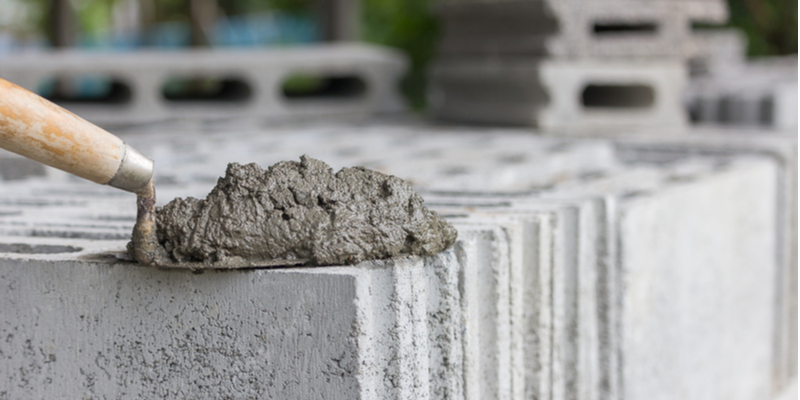In this blog, we are going to be discussing how to tell the difference between historic lime mortar and its modern-day counterpart, cement mortar.
Mortar is the material responsible for holding together brick, stone and other masonry units – it plays an incredibly important role in the stability of a structure. There are four main types of mortar (N, O, S, and M), each one contains a different ratio of cement, lime and sand. As a result, it has unique characteristics such as bonding properties, flexibility, and compressive strength. There are two other distinctions to know about: Portland cement vs. historic lime mortar, this is what we will be focusing on in this blog.
Do You Have Historic Lime or Cement Mortar?
The first thing to look for is the color of the mortar – is it closer to a shade of gray or a shade of white? A whiter mortar typically indicates a lime mortar. If mortar is grayer in color, it is likely Portland cement modern mortar.
There is a white Portland cement mortar, this can be tricky and fool the eye into thinking you are looking at historic lime mortar. There is a quick test you can conduct to further check what type of mortar you have. Simply spray white vinegar onto the mortar and see how much it fizzes. When white vinegar is applied to Portland cement, there isn’t much fizzing that takes place. On the other hand, if you spray white vinegar onto historic lime mortar, you will instantly notice a more dramatic reaction, similar to combining soda and vinegar, as it fizzes up on the surface.
Another way to determine Portland cement vs. lime mortar is to use a hammer of some sort to knock at the surface. When you hit Portland cement it’s going to give off a higher-pitched ring compared to lime mortar. It might be difficult to tell the difference using this trick unless you have a way to compare the two.
Historic mortar often includes small white inclusions in the surface that you can see upon close inspection. These chunks are present from the use of a hot mix, when sand was added directly to the calcium oxide on the job site. From there, it was slaked all together and the mortar was used while hot.
Portland cement may also contain some small white pebbles, but these look different than the white chunks present in historic lime mortar. If you can shave at the chunk of white and it comes off like a piece of chalk, you know you are looking at a lime mortar. Vinegar will fizz especially strong at those white spots on historic lime mortar.
Cement is more indicative of newer work, and unfortunately, newer work tends to be sloppier than the work of the good old days. Pointing is usually on the face of the bricks as opposed to between the bricks. Historic mortar is usually full of intricate detailing, perfect smooth lines that run in between bricks. This is why it’s so important to conduct repairs carefully to historic mortar to preserve the precise razor-sharp lines. Even if there aren’t sharp lines, you’ll see brickwork that is well-gauged and laid in a precise manner.
The Importance of Using the Right Replacement Mortar
If your building was constructed using lime mortar, it is very important that you replace damaged sections with the same type of mortar. Using the wrong type of replacement mortar can cause more damage than good, and even offset the stability of the entire structure.
We conduct testing to uncover the type of mortar you have, right down to its makeup to ensure the highest quality repairs are conducted. Contact us today to learn more or get a quote

